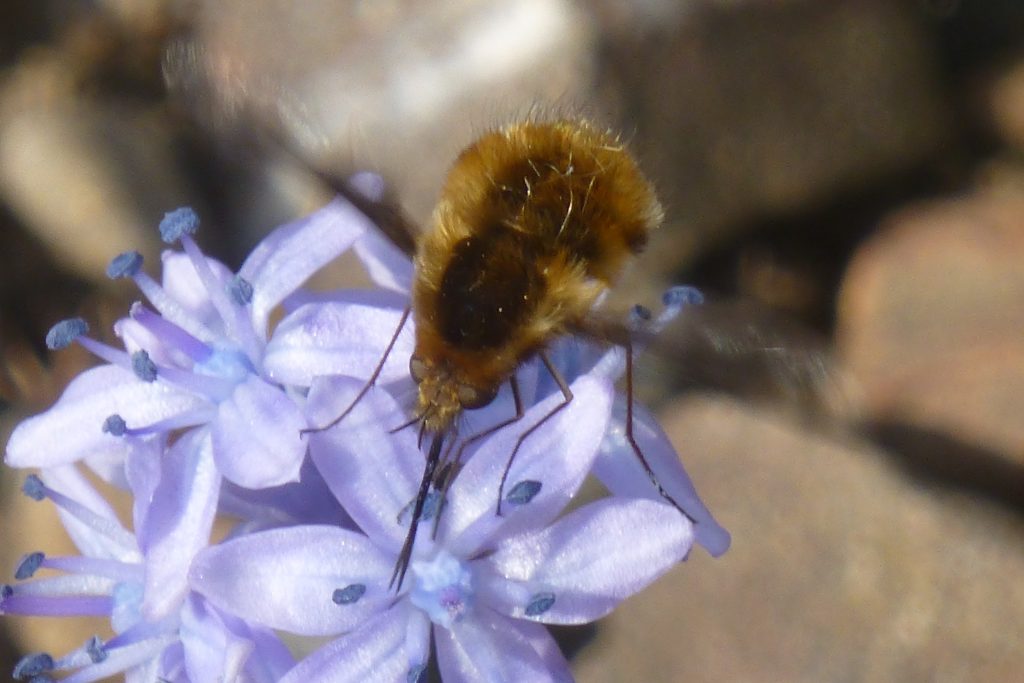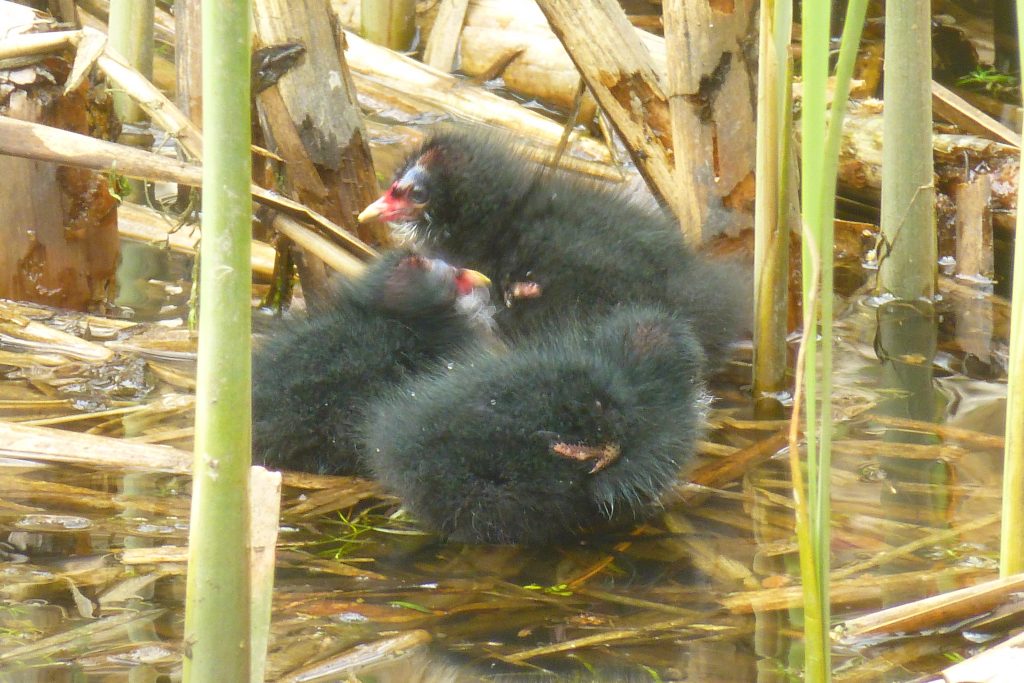April 2015 see-sawed in its weather, with a warm spell in the first week or so (till 9th, with temperatures up to around 18 degrees C in the Edinburgh area) suddenly followed by much colder weather with sleet and hail showers (10th-12th), then a slight recovery but still chilly (till 20th), then another short, pleasantly warm spell with temperatures reaching 21 C around Edinburgh on the last day (23rd), and finally another abrupt change to very chilly weather for the time of year; this continued into the start of May. Not surprisingly, insect activity was concentrated in the two warmer, sunnier spells, which also marked arrival times of migrants (Chiffchaffs and Willow Warblers in the first warm spell, Blackcaps in the second one). No species were added to the Garden’s list during the month and it remains at 746.
Birds Only 36 bird species were recorded in the Garden during April, compared with 40-plus for each month in the first quarter. No unusual species records were made. However, there was a run of six days of Buzzard sightings between 8th and 15th, with at least one bird and up to three together being seen each day. Canada Goose was reported twice (13th and 29th). House Sparrows were also recorded on two days, bringing the year’s total so far to 6 days compared with a totally blank year for the species in 2014. Six Moorhen chicks hatched on the Pond on the morning of 20th, and there was evidence of Great Spotted Woodpeckers nesting. Migrants began to arrive: the first singing Chiffchaff was heard on 1st and numbers gradually built up to at least four different singing males in different parts of the Garden by the middle of the month. A singing Willow Warbler was heard on five dates (10th, 15th, 17th, 25th, 26th) but, as is typical for the Garden, this seemed to be a bird or birds simply passing through on passage. Singing Blackcaps were heard from 17th onwards, again with numbers gradually building up till the month’s end. No hirundines were recorded. Winter visitors had obviously departed by the end of March as no lingering Redwings were seen and there was only one record of Siskin, for which 2015 has been a far poorer year in terms of sightings, with only 11 so far compared with 68 by the end of April last year (out of a year’s total of 80). The full list of species recorded was: Blackbird, Blackcap, Blue Tit, Bullfinch, Buzzard, Canada Goose, Carrion Crow, Chaffinch, Chiffchaff, Coal Tit, Dunnock, Feral Pigeon, Goldcrest, Goldfinch, Great Spotted Woodpecker, Great Tit, Greenfinch, Grey Heron, Herring Gull, House Sparrow, Jackdaw, Lesser Black-backed Gull, Long-tailed Tit, Magpie, Mallard, Moorhen, Robin, Siskin, Song Thrush, Sparrowhawk, Stock Dove, Tawny Owl, Tree Creeper, Willow Warbler, Wood Pigeon, Wren.

Greater Bee-fly (Bombylius major) hovering over Scilla bithynica, 10 April 2015. The 1/250 sec shutter speed was not fast enough to freeze the motion of the hovering wings. Photo Robert Mill.
Insects and other invertebrates: Once again there were rather few records of these because of persistent chilly weather. Five butterfly species were recorded: Comma (7th and 25th), Small White (8th, 25th), Small Tortoiseshell (10th), Peacock (10th, 21st, 25th) and Orange Tip (22nd, 23rd). First sighting dates for the two ‘whites’ (Small White and Orange Tip) were both earlier than last year (2 May and 29 April respectively). Bees and wasps were much more active and in greater variety than in March. The first Early Bumblebees (from 7th), Red-tailed Bumblebees (from 17th) and Garden Bumblebees (22nd) were seen, as were two species of mining bee (Andrena bicolor from 7th, Andrena haemorrhoa from 17th). In contrast to the two ‘white’ butterflies, the first sightings of the three bumblebees were all later than last year (12 March for both Early and Garden Bumblebees, 1 April for Red-tailed) and this was also true for Andrena haemorrhoa but not for A. bicolor which in 2014 was not noticed until the beginning of May. Common Wasp was recorded on three dates, the only ones of the year other than one on 5th January. Six species of hoverfly were recorded, mostly typical early spring species although a sighting of Striped Hoverfly on 24th seemed very early for the species (recent first dates in the Garden being 13 June in 2014 and 23 May in 2013). Seven fly species were identified and it was a notable April for Greater Bee-fly Bombylius major, with the species being recorded on five dates from 10th and up to three being seen together. It seemed to prefer blue or purple flowers such as Muscari, Scilla and Omphalodes in the Rock Garden and Woodland Garden areas. Hawthorn Shield Bug was seen once and two other bug species were recorded. Three species of ladybird were seen: Pine Ladybirds on seven occasions, Cream-spot Ladybird and 10-spot Ladybird on birch leaves on 23rd. The brassy or glossy blackish leaf beetles Phratora laticollis and P. vitellinae were both seen on new poplar leaves (22nd, 23rd) with the infestation of the latter species being particularly heavy with several beetles per leaf. Finally, young nail galls of the mite Eriophyes tiliae were spotted on very young, still expanding leaves of the lime Tilia platyphyllos on 28th, and Common Rough Woodlouse was seen on 8th.

